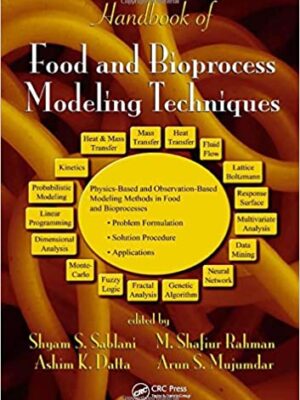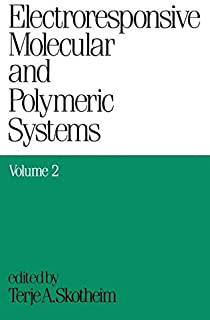Protein Structure Prediction: Concepts & Applications
Original price was: ₹8,106.00.₹6,484.80Current price is: ₹6,484.80.
ISBN: 9783527311675
Author/Editor: Anna Tramontano
Publisher: John Wiley
Year: 2006
1 in stock (can be backordered)
Description
While most textbooks on bioinformatics focus on genetic algorithms and treat protein structure prediction only superficially, this course book assumes a novel and unique focus. Adopting a didactic approach, the author explains all the current methods in terms of their reliability, limitations and user-friendliness. She provides practical examples to help first-time users become familiar with the possibilities and pitfalls of computer-based structure prediction, making this a must-have for students and researchers.
Additional information
| Weight | 0.45 kg |
|---|
Product Properties
| Year of Publication | 2006 |
|---|---|
| Table of Contents | Foreword. Preface. Acknowledgments. Introduction. 1 Sequence, Function, and Structure Relationships. 1.1 Introduction. 1.2 Protein Structure. 1.3 The Properties of Amino Acids. 1.4 Experimental Determination of Protein Structures. 1.5 The PDB Protein Structure Data Archive. 1.6 Classification of Protein Structures. 1.7 The Protein-folding Problem. 1.8 Inference of Function from Structure. 1.9 The Evolution of Protein Function. 1.10 The Evolution of Protein Structure. 1.11 Relationship Between Evolution of Sequence and Evolution of Structure. 2 Reliability of Methods for Prediction of Protein Structure. 2.1 Introduction. 2.2 Prediction of Secondary Structure. 2.3 Prediction of Tertiary Structure. 2.4 Benchmarking a Prediction Method. 2.5 Blind Automatic Assessments. 2.6 The CASP Experiments. 3 Ab-initio Methods for Prediction of Protein Structures. 3.1 The Energy of a Protein Configuration. 3.2 Interactions and Energies. 3.3 Covalent Interactions. 3.4 Electrostatic Interactions. 3.5 Potential-energy Functions. 3.6 Statistical-mechanics Potentials. 3.7 Energy Minimization. 3.8 Molecular Dynamics. 3.9 Other Search Methods: Monte Carlo and Genetic Algorithms. 3.10 Effectiveness of Ab-initio Methods for Folding a Protein. 4 Evolutionary-based Methods for Predicting Protein Structure: Comparative Modeling. 4.1 Introduction. 4.2 Theoretical Basis of Comparative Modeling. 4.3 Detection of Evolutionary Relationships from Sequences. 4.4 The Needleman and Wunsch Algorithm. 4.5 Substitution Matrices. 4.6 Template(s) Identification Part I. 4.7 The Problem of Domains. 4.8 Alignment. 4.9 Template(s) Identification Part II. 4.10 Building the Main Chain of the Core. 4.11 Building Structurally Divergent Regions. 4.12 A Special Case: Immunoglobulins. 4.13 Side-chains. 4.14 Model Optimization. 4.15 Other Approaches. 4.16 Effectiveness of Comparative Modeling Methods. 5 Sequence-Structure Fitness Identification: Fold-recognition Methods. 5.1 The Theoretical Basis of Fold-recognition. 5.2 Profile-based Methods for Fold-recognition. 5.3 Threading Methods. 5.4 Profile-Profile Methods. 5.5 Construction and Optimization of the Model. 6 Methods Used to Predict New Folds: Fragment-based Methods. 6.1 Introduction. 6.2 Fragment-based Methods. 6.3 Splitting the Sequence into Fragments and Selecting Fragments from the Database. 6.4 Generation of Structures. 7 Low-dimensionality Prediction: Secondary Structure and Contact Prediction. 7.1 Introduction. 7.2 A Short History of Secondary structure Prediction Methods. 7.3 Automatic learning Methods. 7.3.1 Artificial Neural Networks. 7.3.2 Support Vector Machines. 7.4 Secondary structure Prediction Methods Based on Automatic Learning Techniques. 7.5 Prediction of Long-range Contacts. 8 Membrane Proteins. 8.1 Introduction. 8.2 Prediction of the Secondary Structure of Membrane Proteins. 8.3 The Hydrophobic Moment. 8.4 Prediction of the Topology of Membrane Proteins. 9 Applications and Examples. 9.1 Introduction. 9.2 Early Attempts. 9.3 The HIV Protease. 9.4 Leptin and Obesity. 9.5 The Envelope Glycoprotein of the Hepatitis C Virus. 9.6 HCV Protease. 9.7 Cyclic Nucleotide Gated Channels. 9.8 The Effectiveness of Models of Proteins in Drug Discovery. 9.9 The Effectiveness of Models of Proteins in X-ray Structure Solution. Conclusions. Glossary. Index. |
| Author | Anna Tramontano |
| ISBN/ISSN | 9783527311675 |
| Binding | Paperback |
| Edition | 1 |
| Publisher | John Wiley |
You must be logged in to post a review.






Reviews
There are no reviews yet.